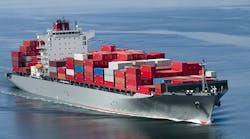In the past, I’ve written about the benefits of integrating and collaborating with partners to reduce the effects of the “bullwhip effect” as well as some of the inherent risks. The recent bankruptcy of Hanjin container line clearly illustrates some of the risks involved in the global supply chain today. As The Guardian reports, “the bankruptcy of the Hanjin shipping line has thrown ports and retailers around the world into confusion, with giant container ships marooned and merchants worrying whether hundreds of tons of goods being carried by the South Korean company will reach shelves.”
While this will obviously have an effect on current shipments (and freight costs), and potentially on shipments of imports for the holiday season, thanks to excess capacity from the great recession and building of additional capacity, “this too shall pass.”
But it does give one thought as to the necessity to always have a backup plan as you never want to get caught with “all of your eggs in one basket.”
In general, to minimize global supply chain risk, you should consider strategies for higher risk (and typically higher value or margin) goods or services such as increasing overall capacity, finding redundant suppliers, increasing responsiveness and flexibility, increasing inventory, pooling or aggregating demand, and increasing source capability (which may cost more).
Specifically, transportation risk generally comes in three kinds:
- Risk that the shipment is delayed
- Risk of disruptions
- Risk of hazardous material.
The types of risk mitigation strategies that an organization can consider are:
- Decreasing the probability of disruptions (i.e., spread the risk).
- Have alternative routings, carriers and modes prepared in advance.
- In case of hazardous materials, the use of modified containers, low-risk transportation models, modification of physical and chemical properties can prove to be effective.
As risk goes hand-in-hand with reward when it comes to operating in the global economy, it’s better be safe than sorry and this can only be done effectively and efficiently by being prepared in advance through a clear risk management and mitigation strategy.




